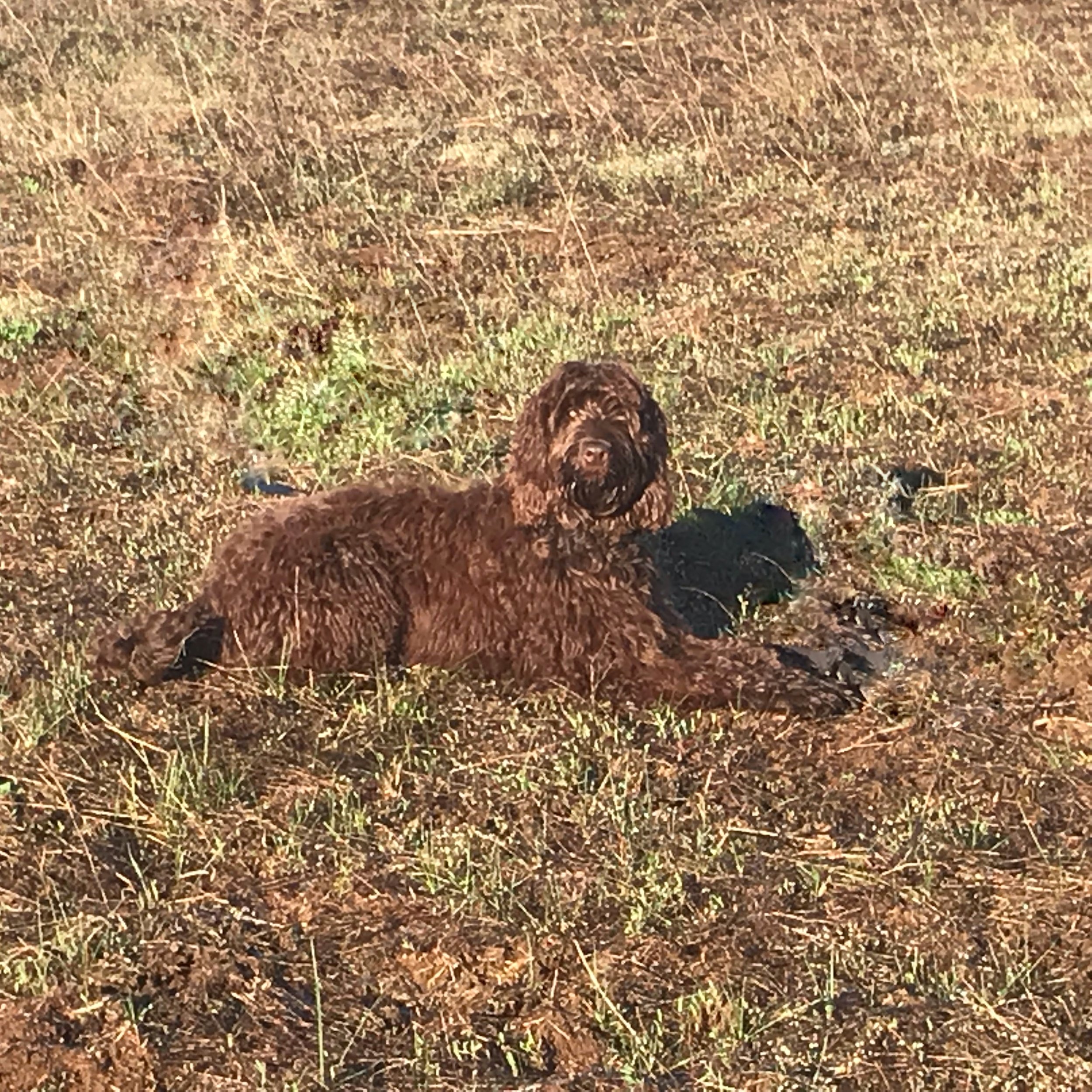There is a tool when raising a puppy or training a dog called tethering.
Tethering means that if you are with your dog and not actively training, or the dog is in their crate or some other assigned rest area, you and your dog are basically attached at the hip. Literally. You attach a leash around your waist, and clip it onto your dog’s collar. Where you go, the dog goes, training her to stay close, strengthening the bond between you and your dog, and allowing you to observe and respond to her behaviors appropriately. Rewarding what you want. Ignoring or correcting what you don’t.
Gracie, our 14 week old chocolate labradoodle and I are becoming increasingly comfortable with this tethering routine. She is relaxing into it, sticking closer sooner, and is starting to offer behaviors that get rewarded, and learning to avoid those that do not. Left to her own devices, without this practice, it would be easy for her to wander, ok, race, into territory where she could do harm to herself, her surroundings, and other dogs or people.
Standing at the counter with her calmly sitting by my side, it struck me that left to our own devices, untethered from our true self, and our values, beliefs, and priorities, we too can wander, ok, maybe race, into territory where we can do harm to ourselves, our surroundings, and other people.
In order to attach ourselves closely to our deepest values, beliefs, and priorities, we have to know who we are and what we care about, and then tether ourselves closely enough that when tempted to wander off course, we are pulled up short. The way I stay tethered to what matters is by declaring my bedrock beliefs. To trusted family, friends and colleagues, giving them permission to check me if they see me straining against the leash. On my website or at the beginning of a retreat, workshop, or keynote, I declare them publicly, compelling me to stay accountable to what I profess. When struggling to stay true to who I am, there are trusted professionals to help me do the inner work necessary to live into my truest self.
Gracie doesn’t always love tethering, but as I stay calm, solid and strong, she is learning to trust the bond being created by sticking close.
If Gracie can do it, so can we.




